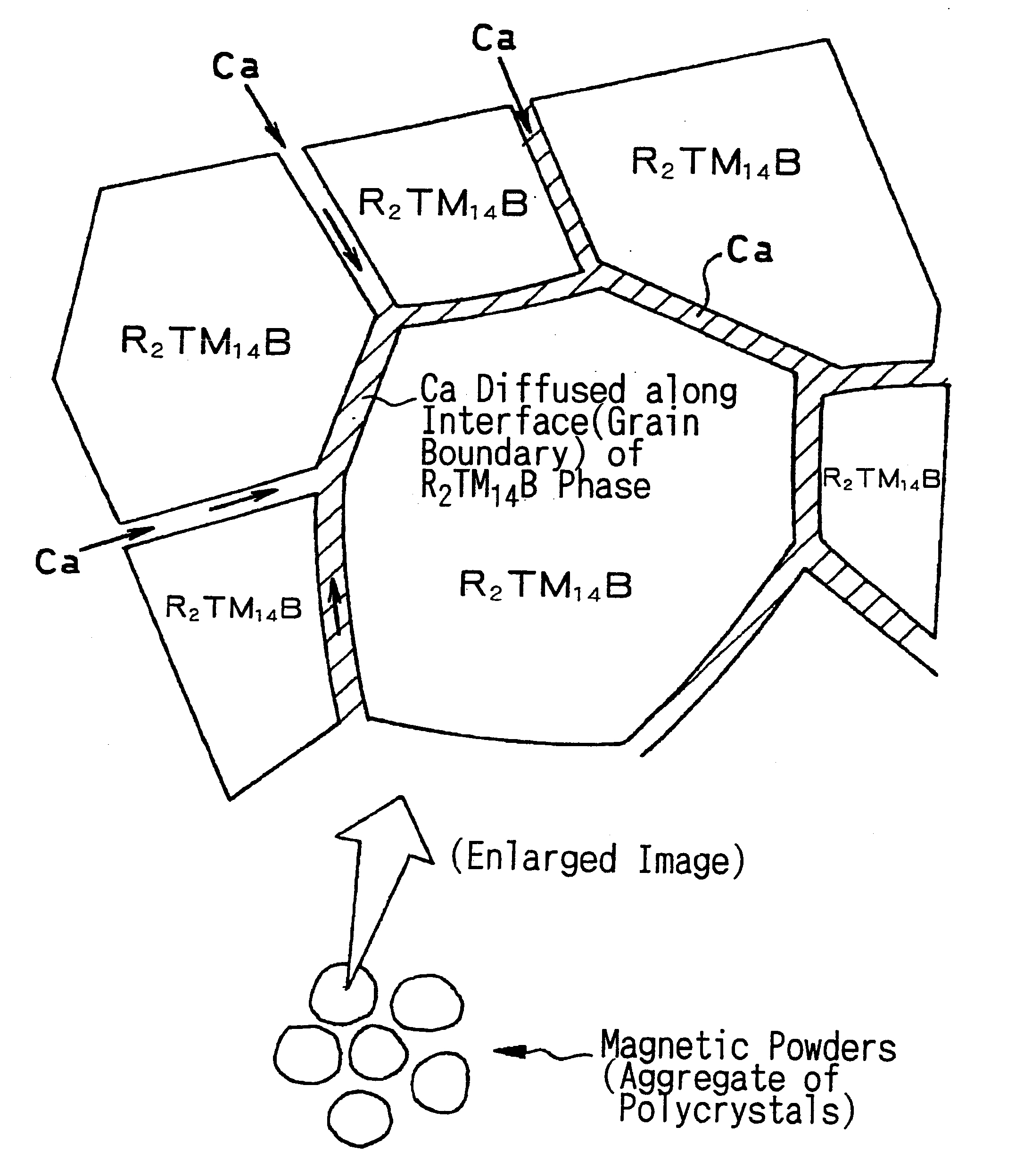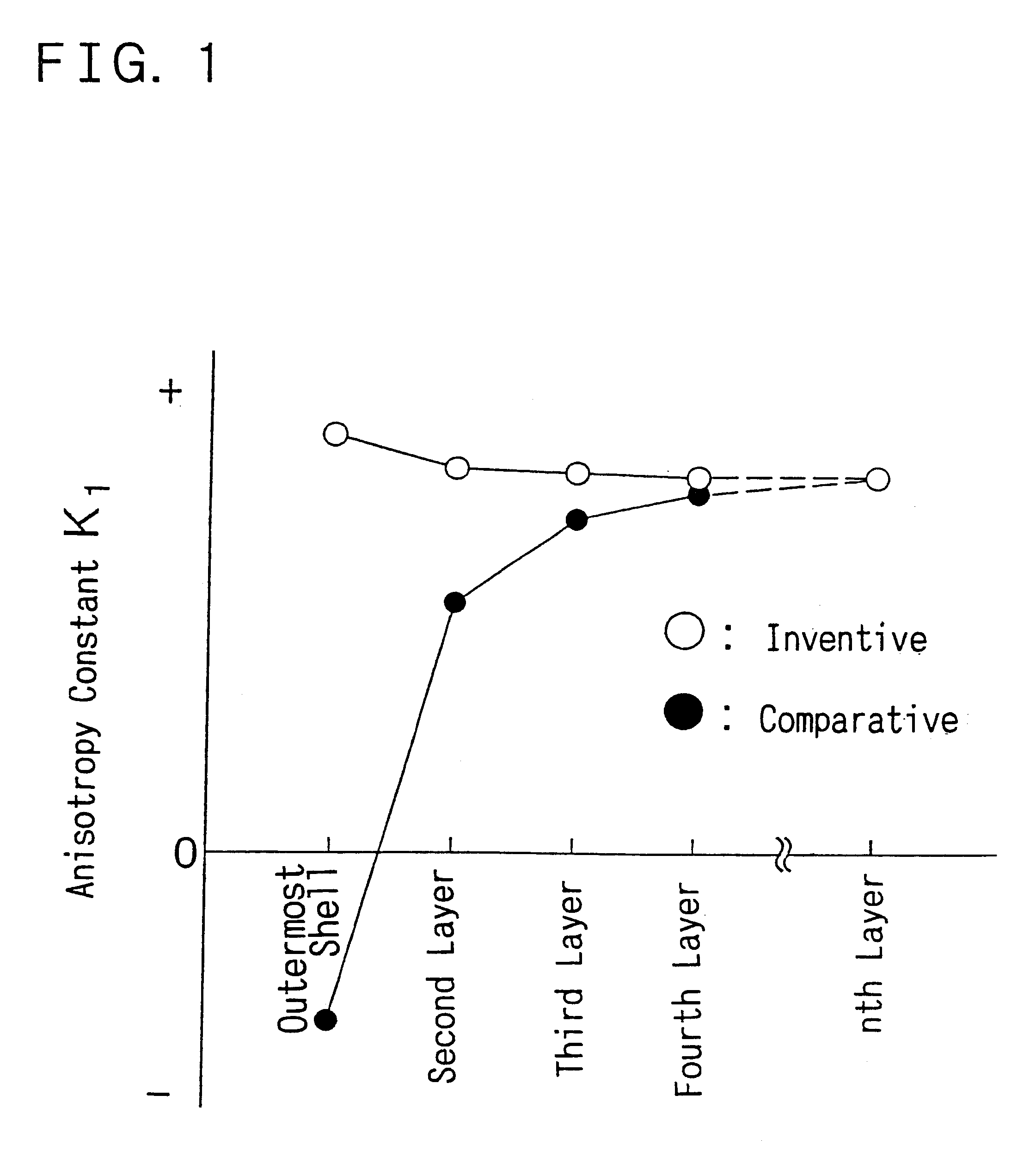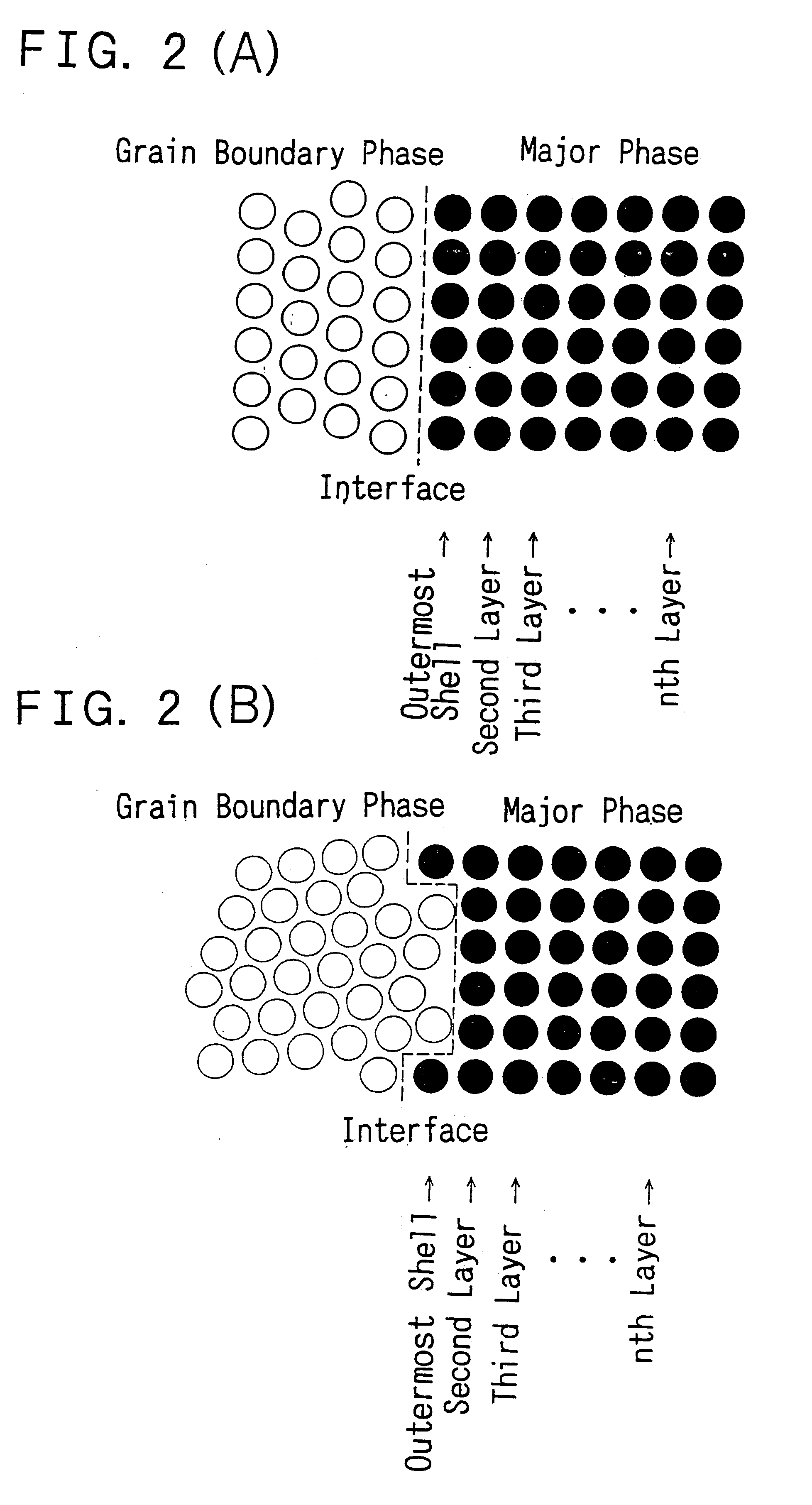Permanent magnets and R-TM-B based permanent magnets
a permanent magnet, permanent magnet technology, applied in the direction of magnetic materials, magnetic bodies, electrical equipment, etc., can solve the problems of high investment cost for production equipment, insufficient information as to the specified means for suppressing the nucleation of demagnetizing field to improve coercivity, and difficult to achieve drastic improvement of magnetic properties
- Summary
- Abstract
- Description
- Claims
- Application Information
AI Technical Summary
Benefits of technology
Problems solved by technology
Method used
Image
Examples
example 1
Nd.sub.2 Fe.sub.14 B crystal grains, with a grain size of 10 .mu.m, were press-consolidated under orientation in a magnetic field. 5 wt % of Ca metal powders, pulverized to not more than 200 .mu.m, were sprinkled over the surface of the green compact, heated in vacuum at 800.degree. C. for one hour and cooled. The resulting sample was of such a structure in which crystal grains of Nd.sub.2 Fe.sub.14 B as the major phase are surrounded by the grain boundary phase of Ca metal, with the two phases being directly contacted with each other with a epitaxial interface in-between. The sample has a coercivity of 1.3 MA / m.
example 2
On the surface of Sm.sub.2 Fe.sub.17 N.sub.x, where x is approximately 3, having a grain diameter of 10 .mu.m, Zn was coated in an amount of 2 wt % by an electroless plating method. The resulting mass was heated in vacuum at 450.degree. C. for one hour and cooled. The resulting sample was of a structure in which Sm.sub.2 Fe.sub.17 Nx crystal grains as the major phase were surrounded by a Zn metal phase, with the two phases being directly contacted with each other with an epitaxial interface. The sample had a coercivity of 1.9 MA / m.
example 3
On the surface of a thin SmCo.sub.5 film of 80 .mu.m thick, prepared by the sputtering method, as a substrate was heated to 700.degree. C., Y was coated to a thickness of 5 .mu.m by the sputtering method, as the substrate was heated to 400.degree. C. By X-ray diffraction, the crystal structure of SmCo.sub.5 in the sample film obtained had a hexagonal CaCu.sub.5 structure, while Y had a La type structure of the hexagonal close-packed structure, with the two having a crystal azimuth such that its c-axis is perpendicular to the film surface. Observation of the structure of the sample cross-section over a transmission electronic microscope revealed that the SmCo.sub.5 phase was formed in a columnar crystal state of several .mu.m in diameter, with an epitaxial interface between the SmCo.sub.5 phase and the Y phase. The thin film had a coercivity of 1.5 MA / m.
PUM
| Property | Measurement | Unit |
|---|---|---|
| angle of orientation deviation | aaaaa | aaaaa |
| angle | aaaaa | aaaaa |
| particle size | aaaaa | aaaaa |
Abstract
Description
Claims
Application Information
 Login to View More
Login to View More - R&D
- Intellectual Property
- Life Sciences
- Materials
- Tech Scout
- Unparalleled Data Quality
- Higher Quality Content
- 60% Fewer Hallucinations
Browse by: Latest US Patents, China's latest patents, Technical Efficacy Thesaurus, Application Domain, Technology Topic, Popular Technical Reports.
© 2025 PatSnap. All rights reserved.Legal|Privacy policy|Modern Slavery Act Transparency Statement|Sitemap|About US| Contact US: help@patsnap.com



